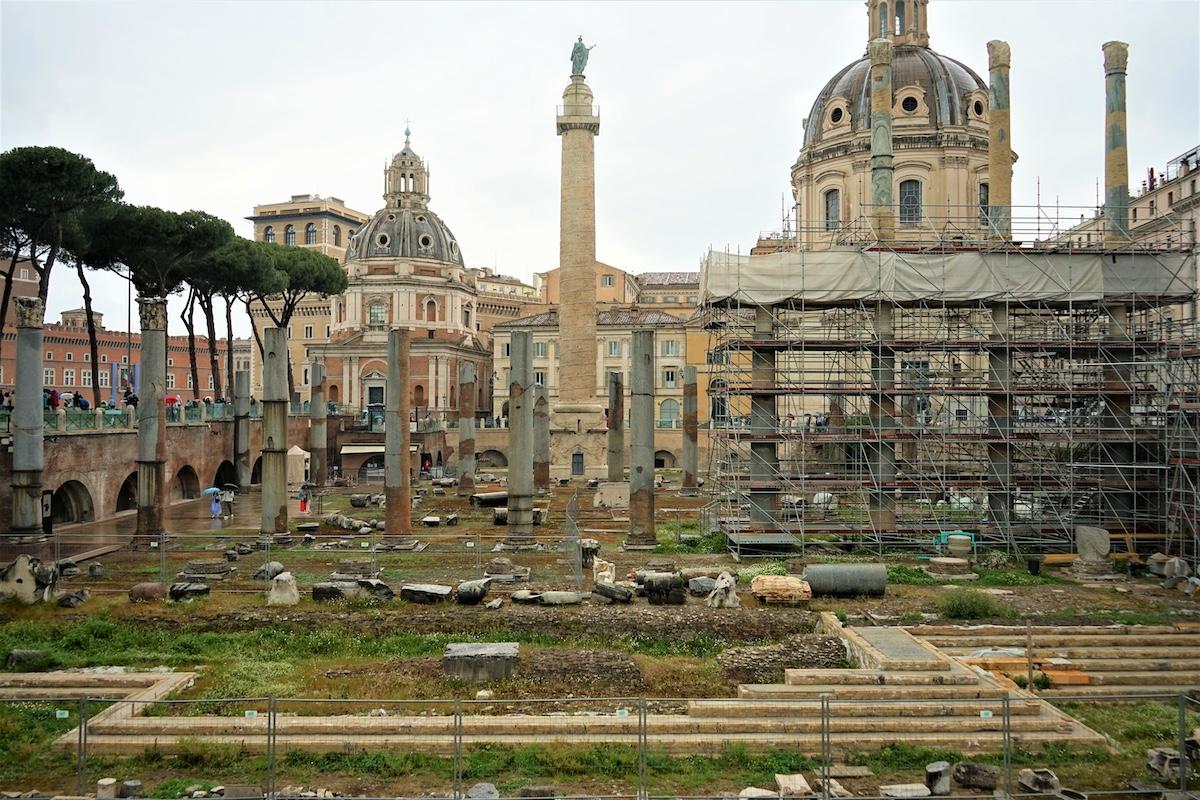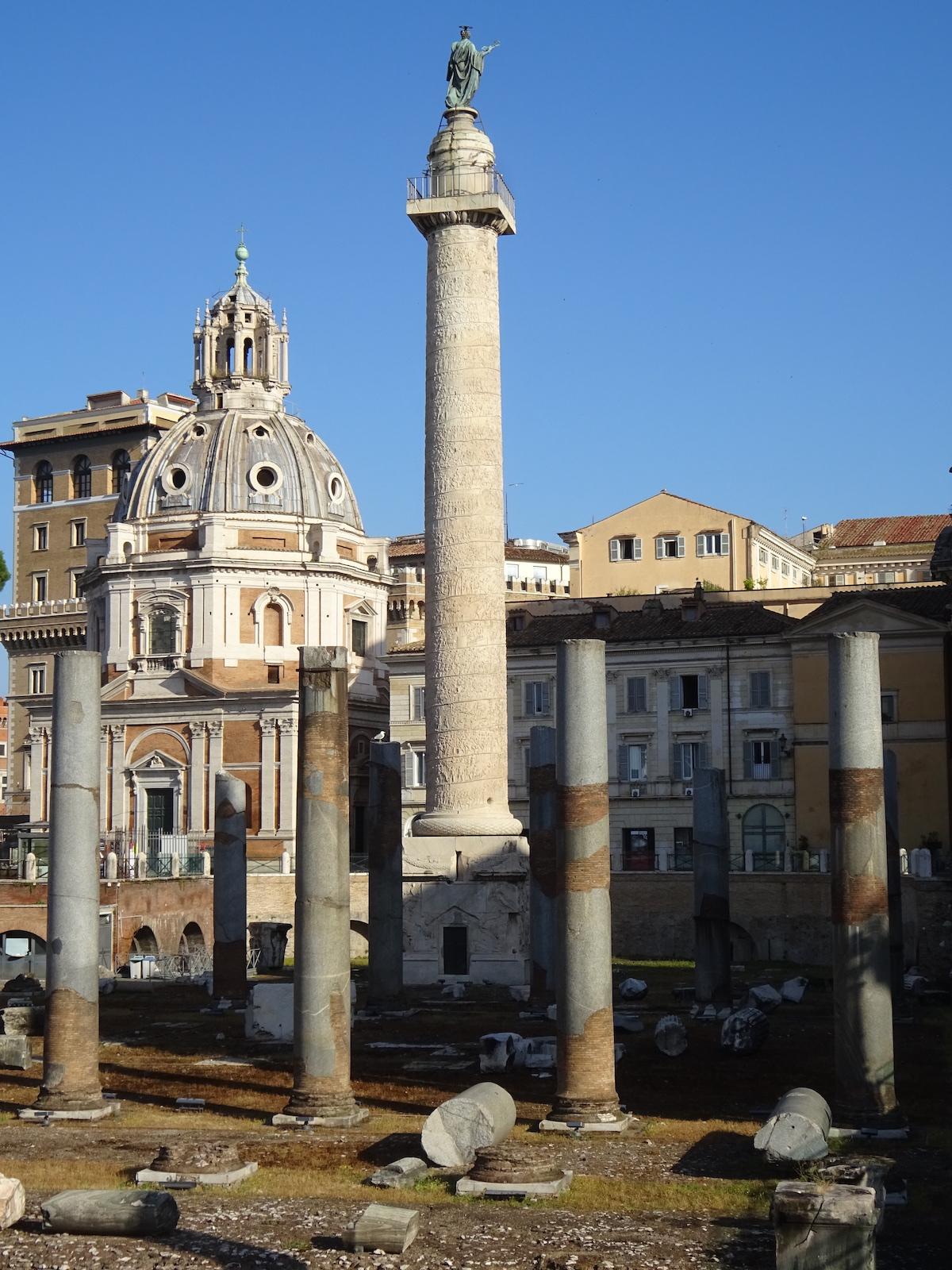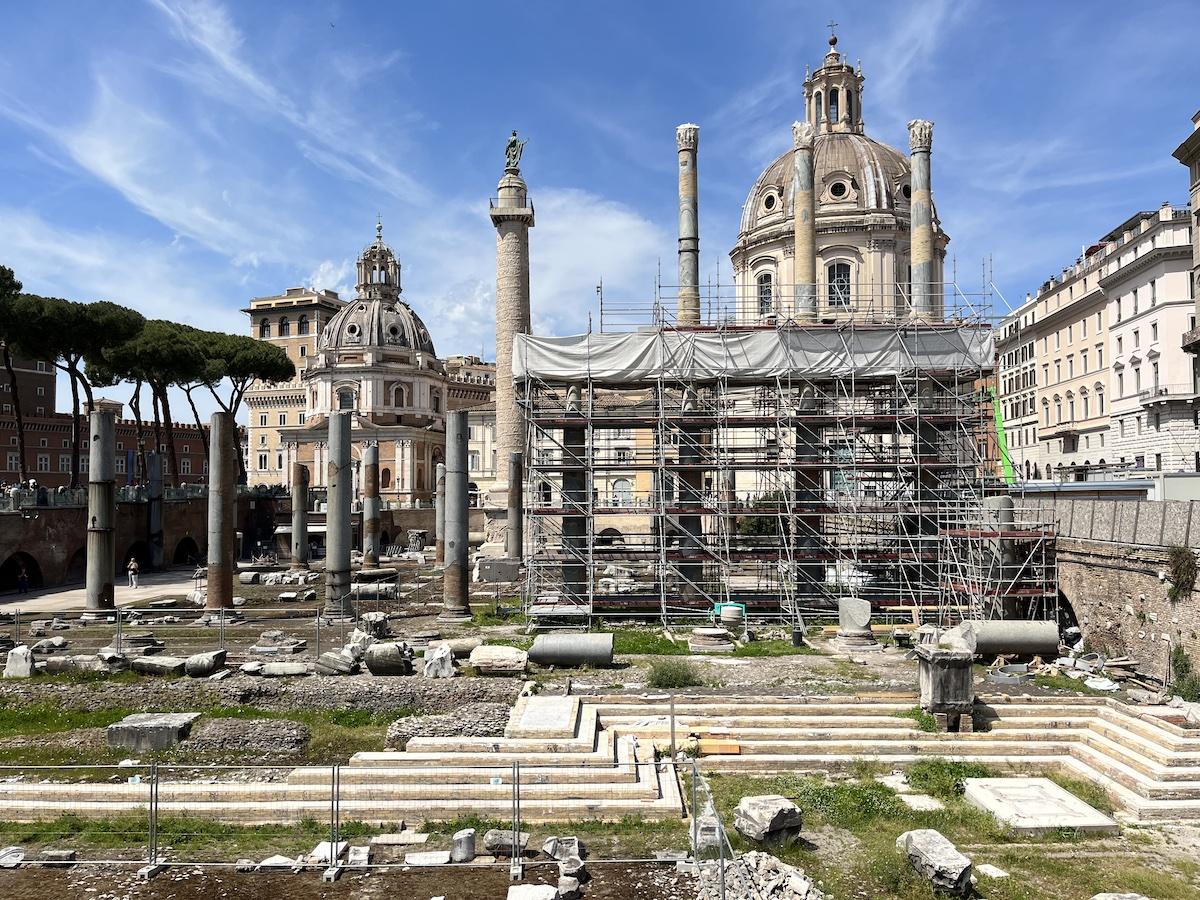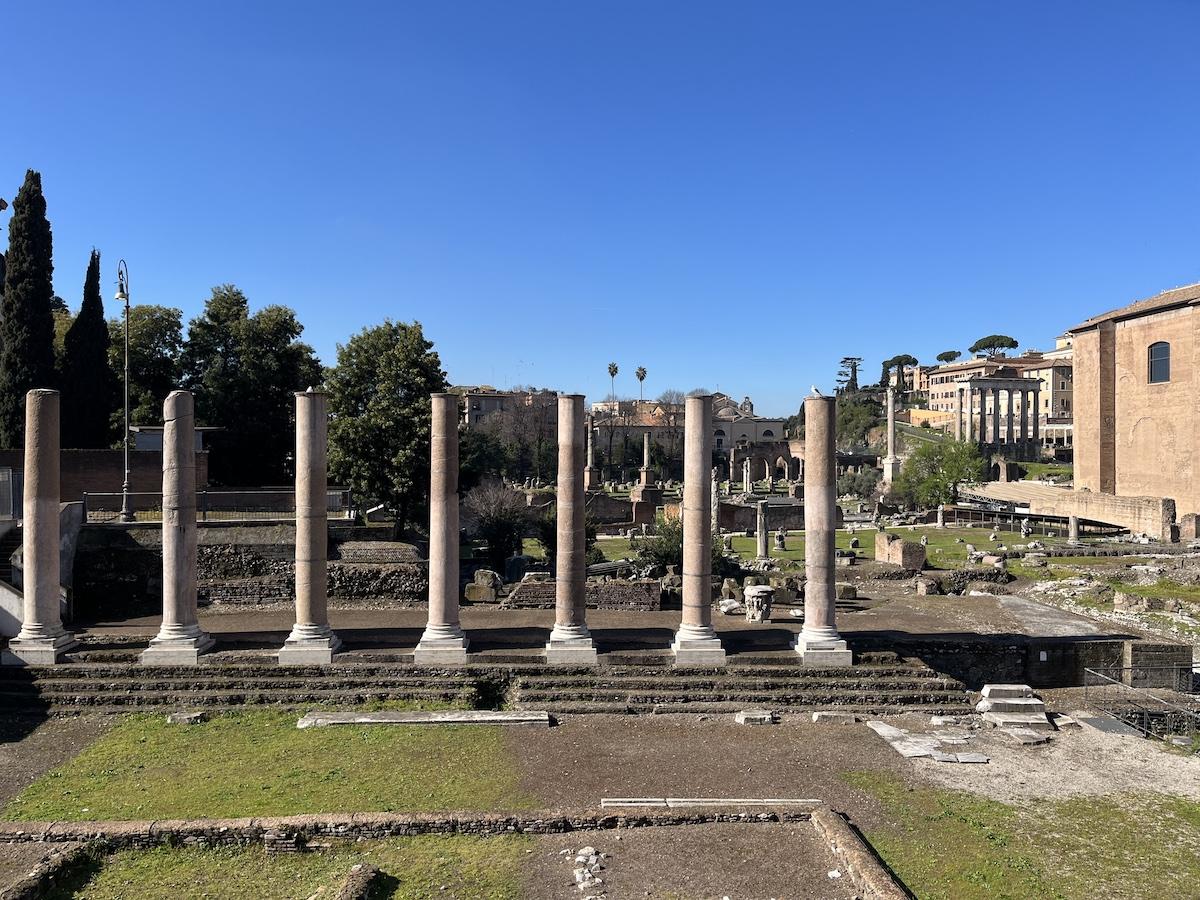Restoration can be controversial. How much of a building should be put back up? How much new material is it appropriate to include alongside the original elements? Should the new material be subtly integrated or made visually distinct from the old? Go too far and there is a danger of creating something misleading; be too restrained, and it risks leaving the remains incomplete and unsightly.
In the city of Rome, the practice of anastylosis goes back two centuries and continues today. One such program is nearing completion at the Basilica Ulpia, a once monumental structure intended to house legal trials and built by the emperor Trajan in AD 112.
The restoration project was planned in 2015 and made possible through a 1.5-million-euro private donation, although work only got underway in 2021 and in 2022 the donor was sanctioned by the EU following the Russian invasion of Ukraine.
































